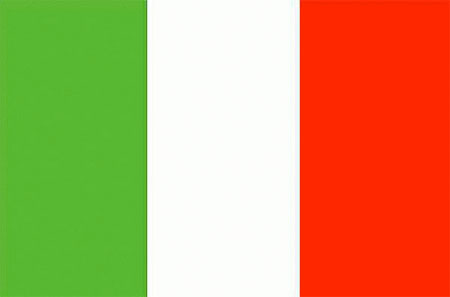
This was not my first visit to Rome but it was probably the most enjoyable because I was not rushed. There was no schedule, no bus to catch, no group to follow. We walked a lot, stopped when we felt like it, took audio guides when we wanted extra information, ate when and where we felt like it. Having rented an apartment, we explored the local grocery stores and managed to fix a few nice dinners at home. It is such a different experience to live like the locals rather than like tourists.
Rome has got to be the city that has the most treasures by square inch of any other city I have ever visited. There are fountains and sculptures everywhere, Roman ruins, castles and palaces, there is art everywhere, in churches especially and there are plenty of those in Rome!
It is an easy city to navigate and no matter where you walk you will come across something worth visiting or stopping for.
We stayed in an apartment located midway between two popular attractions: the Trevi fountain and the Spanish Steps. It is a wonderful area with plenty of restaurants, bars and shops.
So obviously those were our first visits.
Piazza di Spagna also known as The Spanish Steps
The Piazza di Spagna is one of the most famous images in the world. At the end of the seventeenth century, it was called Trinità dei Monti, after the church that dominates the square from above, but it was later given the name we know today after the Spanish Ambassador who lived there.
At the foot of the stairs, stands the famous Barcaccia Fountain, with its characteristic form of a sinking ship; the fountain recalls a historic flood. The sinking boat was ably invented to overcome a technical problem due to low water pressure. The sun and bee ornamentation is a symbol of the Barberini family and a reference to Pope Urban VIII who commissioned the work. However, the main attraction of the square has to be the spectacular staircase of Trinità dei Monti. With its ramps and stairs that intersect and open out like a fan the staircase connects the square and the Trinità Church above.
Unfortunately the monument in front of the church was undergoing some maintenance so the scaffoldings were blocking the view of the church.
In spring the ramps of the staircase are literally covered with flowers.
Speaking of flowers we took a stroll from the top of the stairs and walked by a restaurant that had lovely rose bushes along the gate.
Trevi Fountain
The Trevi Fountain is a fantastic work of art, a jewel of water and stone that is nestled in the historic centre of the city.Even the palace in the background blends perfectly with the composition. The central feature of the monument is a chariot in the shape of a shell, drawn by seahorses with Triton as their guide. Before the enormous central niche stands Oceanus. To the side are the statues of Abundance and Salubrity. All around, natural and artificial forms merge together in a representation of rocks and petrified vegetation that run along the foundation of the palace and around the borders of the pool, which represents the sea.
This unique statue has an ancient history. Its origins go back to Roman times. It was the terminal point of the Aqua Virgo aqueduct commissioned by Augustus, which was used to provide water for the thermal baths. Trevi derives from the old name for the area, which was originally called Trebium. The aqueduct continued to function, even though it was necessary to wait until the eighteenth century when Pope Clement XII decided to restore the Trevi district and began work on the fountain we know today. It took three centuries to complete.
No matter what time of day we went it was always busy there and you could tell you were getting close by the noise…of the people and the water…
Tradition has it that if you throw a coin over your shoulder into the fountain, you will come back to Rome…I don’t think I have ever done it yet this was my fourth visit…so I am not too concerned.
The Vatican
For many, Rome is synonymous with the Vatican, St Peter’s Basilica, the pope, and the Catholic Church. And it IS an important landmark…although in my mind the interest lies in the Vatican museum that holds unbelievable amounts of works of art, not the least of it being the Sistine chapel.
A word to the wise, visiting the Vatican museum takes easily four hours and if you do not reserve your tickets ahead of time you may have to wait another several hours in line before you get in…
The visit starts with an inner courtyard. Each wing surrounding it houses a collection. When you enter the building you walk through several long hallways sumptuously decorated each with a different theme. Here the ceiling of the maps hallway.
These photos should give you a feel for the size of things in some of these rooms. Compare the height of the tourists with the sculptures. The red porphyry basin in the middle of the room could be a small pool. The floor was all intricate mosaics.
There are other courtyards that offer a refreshing change of pace. They are also decorated with marble statues and monuments, each one telling a story. You could spend months in here finding out about each piece.
Of course the high point of the visit is the Sistine chapel. Photos are forbidden so I cannot illustrate what I am talking about. I will only mention that it was cleaned up a few years ago so that the colors of the paintings are now a lot brighter and a lot less gloomy than the soot covered ones I saw the first time I visited. Michelangelo’s ceiling is, in my mind, the star of the room and it is only when you see other church ceilings that you can truly appreciate his genius. The proportions and perspective are so perfect that you take them for granted. You wish you could lie down on the floor to really look at it.
You obviously cannot go to the Vatican without visiting St Peter’s. So that was our last stop. Again, everything is on such a grand scale that you do not realize how big this church is. There are markings on the floor to indicate where the various cathedrals of the world would end if they were fitted inside this one. The dome, which you can see from so far, actually rises to a total height of 136.57 m (448.06 ft) from the floor of the basilica to the top of the external cross.
There are so many painting, mosaics, sculptures that again, one could spend months in there and still not notice everything. One of the most famous sculptures is Michelangelo’s Pieta. I had seen it before but never noticed how young looking he made the virgin Mary.
The Piazza outside is also spectacular: it is bordered by four rows of columns—300 all together—carved from Roman travertine to form an oval 650 feet across the long axis marked by three monuments: fountains propelling tall jets of water on either side and in the center by an Egyptian obelisk that had served as a turning post in the chariot races at the ancient Circus of Nero.
From the Vatican we walked to Castel Sant’Angelo. Initially commissioned by the Roman Emperor Hadrian as a mausoleum for himself and his family. The building was later used as a fortress and castle, and is now a museum. It is a circular building that I found to be strangely laid out. You can go to the top and enjoy of lovely view of the city.
The Castel Sant’Angelo appeared in Dan Brown’s 2000 novel Angels and Demons. In Puccini’s opera, Tosca, this is where Tosca leaps to her death from its battlements.
The next day we set out for another landmark: the Pantheon. But along the way we walked by a church called St Louis des Français, I popped an eye inside and here is what I saw:
Not bad for an ordinary little church….
The Pantheon is the Roman monument with the greatest number of records: the best preserved, with the biggest brick dome in the history of architecture and is considered the forerunner of all modern places of worship. It is the most copied and imitated of all ancient works. The name comes from two Greek words pan, “everything” and teon “divine”. Originally, the Pantheon was a small temple dedicated to all Roman gods.The height to the oculus and the diameter of the interior circle are the same, 43.3 meters. When you enter it seems dark and then you are blinded by the ray of light coming down from the oculus…it is somewhat of a shock…but a very “comfortable” building to visit, cool and not overwhelming.
Our expedition then took us to Piazza Navona. This used to be a “stadium” where sports events took place, hence its long narrow shape. The real attraction of the square is the famous Fountain of the Four Rivers: the Danube, the Ganges, the Nile and the Rio de la Plata. They are arranged on a steep rocky reef from which a Roman obelisk rises up into the air. Popular tradition has it that the sculptures on the fountain symbolize the rivalry between Bernini and Borromini, who were the most important artists in 17th century Rome. Innocent X at first had commissioned the work to Borromini, but Bernini obtained the commission by “corrupting” the pope’s sister-in-law (he gave her a silver copy of the project). Borromini built the church of Sant’Agnese in Agone, which stands in front of Bernini’s Fountain. For this reason the personified Rivers seem to cover their faces, not to see Borromini’s “horrible” work.
Unfortunately, it was undergoing repairs and was partially covered so we could not get the full effect.
In line with the Fountain of the Four Rivers are the Fountain of the Moor, in front of the Palazzo Pamphilij and the Fountain of Neptune, at the northern end of the square.
On the way back we stopped into yet another church: Santa Maria Sopra Minerva, because we wanted see the Christ the Redeemer sculpture by Michelangelo. There are so many churches with so many works of art, that an entire lifetime would not be enough to see them all, that’s why, like all tourists, we go for the stars, the famous pieces… In front of the church there is one of the most curious monuments of Rome, the so-called Pulcino della Minerva. It is a statue designed by the Baroque sculptor Gian Lorenzo Bernini of an elephant as the supporting base for the Egyptian obelisk.
We started our visit with two landmarks, there is another one, located almost in the ‘geometric centre’ of Rome that I have yet to mention: the Piazza Venezia. Unlike the Piazza del Popolo or the Piazza Navona, chaotic traffic dominates the square; it is nerve racking to try to cross the street. Several palaces surround the piazza: Palazzo Venezia, Palazzetto Venezia, Palazzo Bonaparte (home of Napoleon’s mother) and Palazzo delle Aste with via del Corso in between. Close to the Palazzo Venezia stands San Marco Church.
Dominating Piazza Venezia is Il Vittoriano, a huge white marble monument dedicated to king Victor Emmanuel II, the first king of Italy. Once again the monument is being repaired so it is partly under wraps.
Close by, is a much prettier and more peaceful place called: the Campidoglio. Also known as the Capitoline Hill, it is the smallest of Rome’s seven hills. It was the religious and political center of the city since its foundation more than 2500 years ago. During the middle ages, the site became the center of civic government and several palaces were built on the hill. Michelangelo was asked to design a new square, the Piazza del Campidoglio. The long, beautiful staircase to the Piazza del Campidoglio is known as the Cordonata. It is adorned with granite statues of Egyptian lions at the foot and two large classical statues of Castor and Pollux at the top. Three buildings border the square: the one on the left coming from the Cordonata is the Palazzo Nuovo. The central building is the Palazzo Senatorio and the third, opposite the Palazzo Nuovo, is the Palazzo dei Conservatori. At the center of the square is a replica of a statue of Marcus Aurelius. It is well worth the climb.
We took a double decker tour bus and got a different point of view of the city…especially around the archeological and historical sites… We got a birds eye view of the “Ancient Rome” as we drove around the Colosseum.
As well as many fountains and monuments.
The view of the Tiber was especially picturesque as we drove over it.
I was surprised to see orange trees covered in fruit.
It boggles the mind to grasp how people have lived and built here all these years, over and around each other as in the case of this wall built over some of the oldest columns in Rome.
We chose to hop off at Santa Maria de Cosmedin church because of a circular slab of marble that has a face engraved on it with slits for eyes and a slot for its mouth. A legend developed that if a perjurer put his hand in the mouth and told a lie, the mouth would bite off the fingers of the perjurer’s hand! This explains the name, the “Mouth of Truth” or the Bocca della Verità.
Across the street stands a lovely circular temple known as the Temple of Vesta because of its similarity to the temple of Vesta that stood in the Roman Forum. This is the oldest preserved temple in Rome. It is cylindrical, surrounded by twenty fluted columns, and constructed from Greek marble.
After the cruise we returned to Rome but stayed in a different area, which was not as nice but convenient for what we wanted to visit. I will include the photos in this section to make it less confusing.
We had one afternoon and two churches on our agenda: Basilica San Pietro in Vincoli (Saint Peter in Chains) and Basilica di Santa Maria Maggiore.
We walked to San Pietro first and were very disappointed to find it was closed until mid afternoon so we turned our plans around and walked on the Santa Maria. Known in English as St Mary Major, it is one of the four major or four papal basilicas. The exterior is rather stern but the interior is on the contrary very ornate and busy.
Giuliano da Sangallo designed the 16th century coffered ceiling.
The Capella Sistina, the Crypt of the Nativity and The icon of the virgin Mary in the Borghese (or Pauline) Chapel are the main attractions.
Yet I was most fascinated by the mosaic floors and the bronze doors.
After the visit as we had time to kill we stopped in a small restaurant…and had a wonderful lunch served by a charmer who was brought us glasses of Limoncello after dessert. We were feeling very mellow as we walked back towards the second church on our agenda: Basilica San Pietro in Vincoli (Saint Peter in Chains). The interior is very sober, refreshing really.
It was first built in 432-440 to house the relic of the chains that bound Saint Peter when he was imprisoned in Jerusalem.
But what we really came to see was Michelangelo’s magnificent statue of Moses.
This concludes the Rome visits even if we returned here a third time after the excursion to the Amalfi coast. It was only for a night so there was no time to visit another church or museum, but I finally gathered the courage to order a fried artichoke at the restaurant. I had seen them in a few places during our visit and was curious. All it is, is a Jerusalem artichoke that has been deep-fried. They are tender enough that you eat the whole thing…It was nothing to write home about, nor very photogenic…a dark mass on a piece of absorbent paper…but now I know!
Take me to Mediterranean Cruise, Part 2
Take me back to Mediterranean Cruise, Main Index
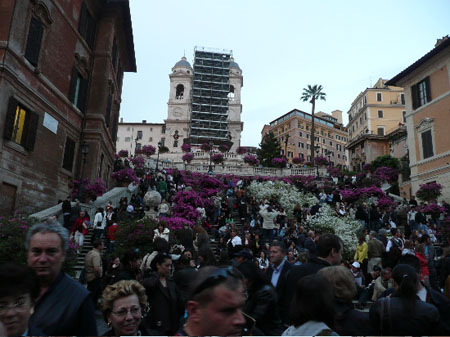
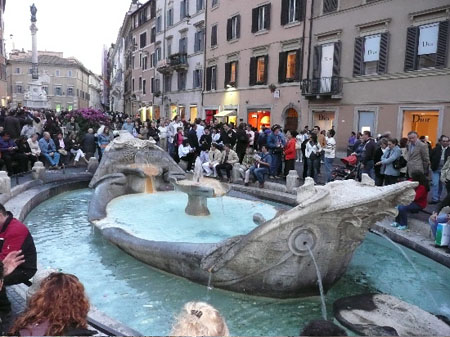
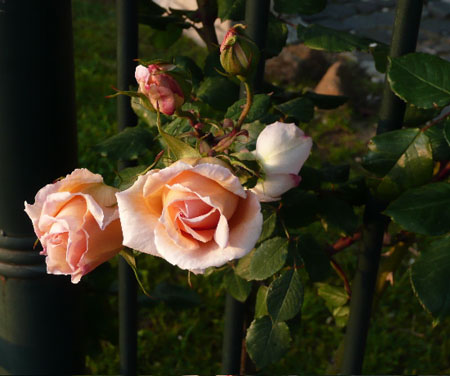
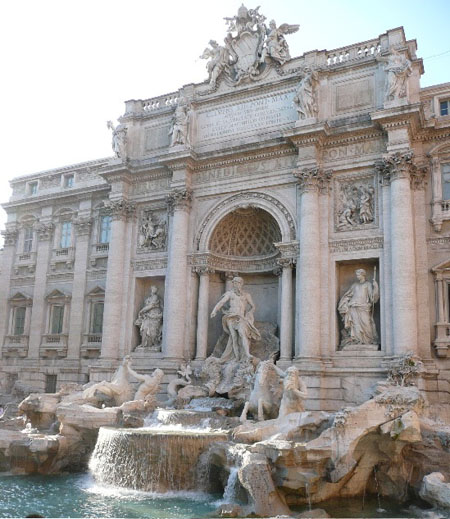
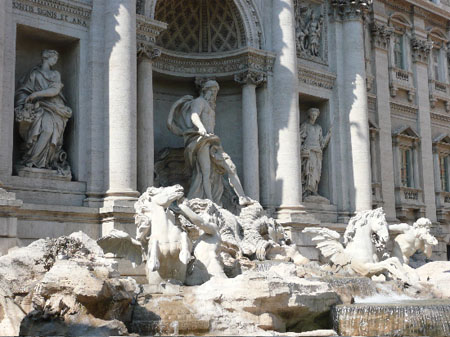

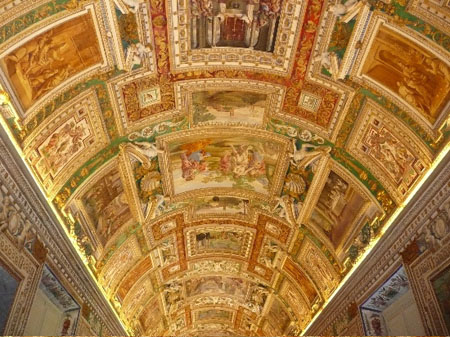
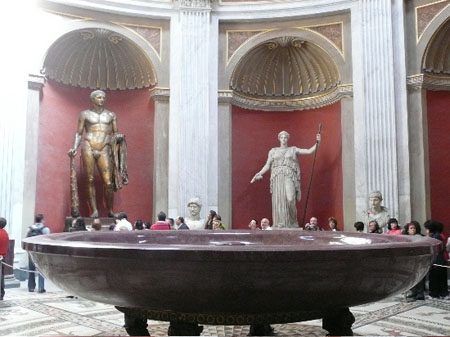
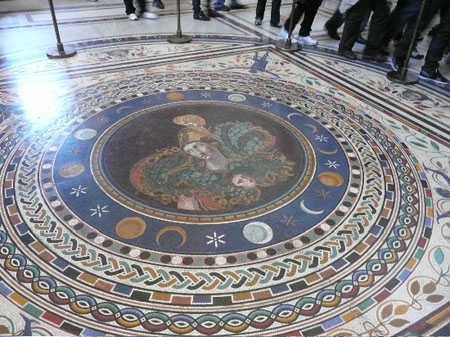
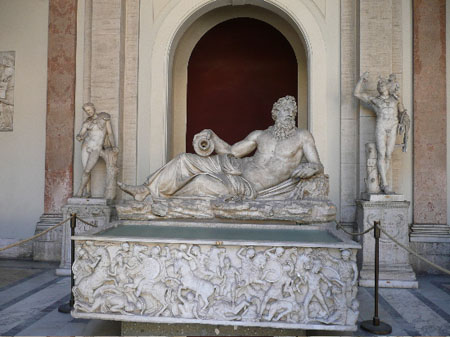
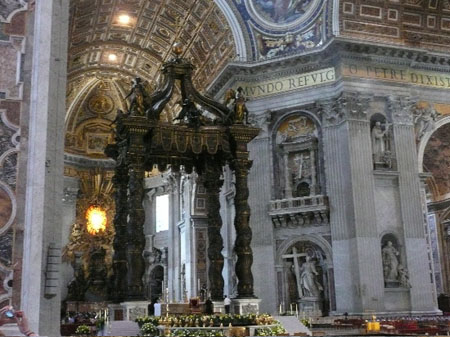
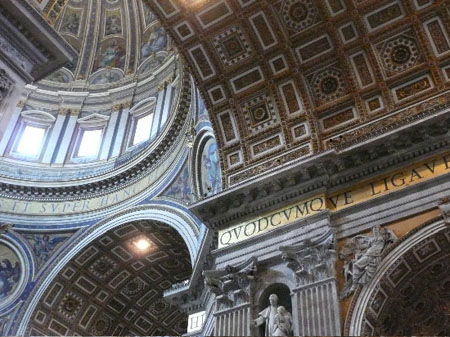
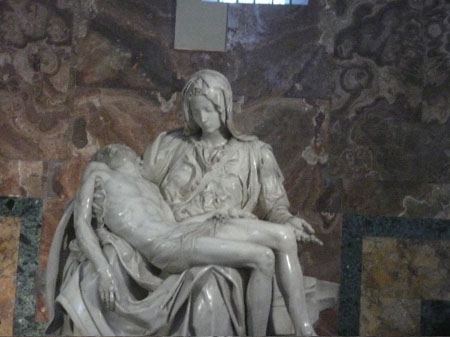
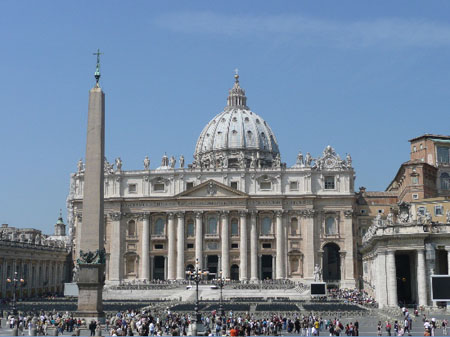
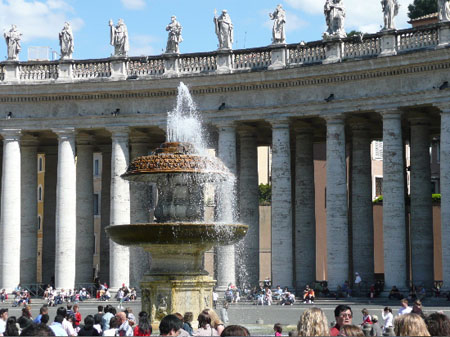
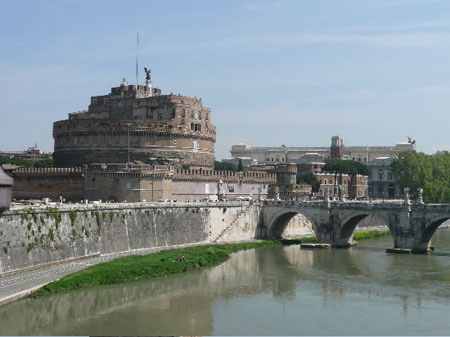
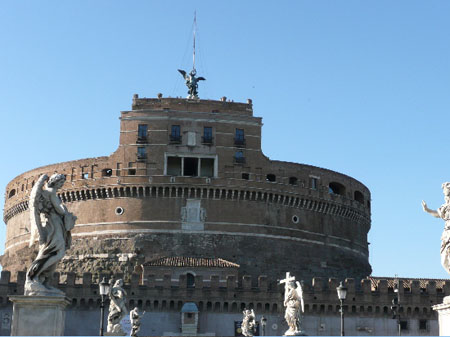
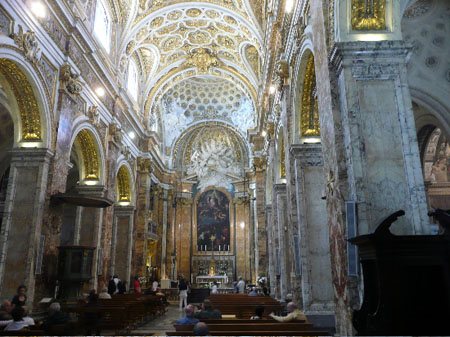
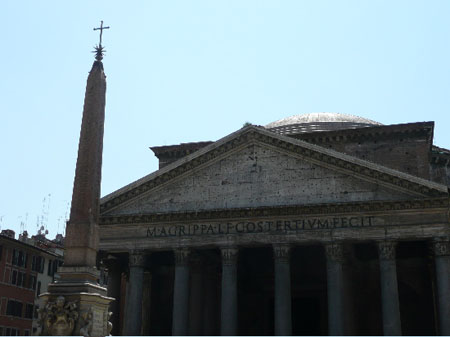
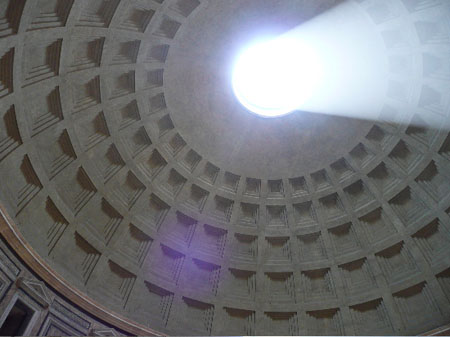
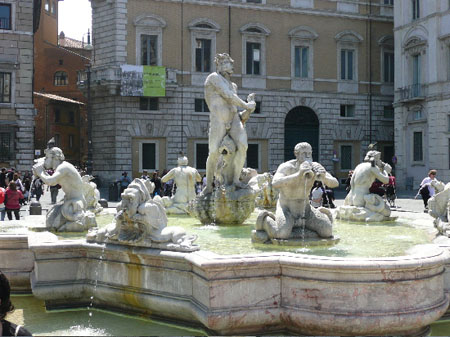

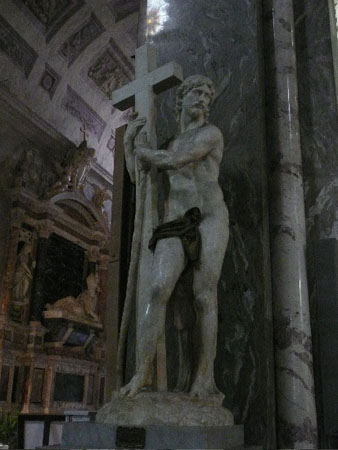
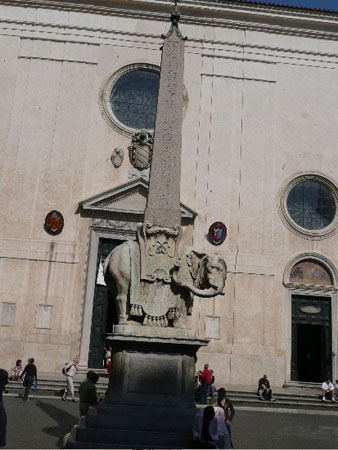
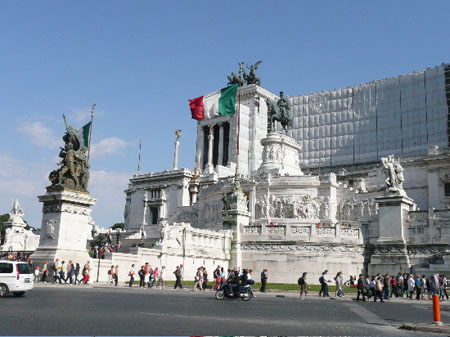
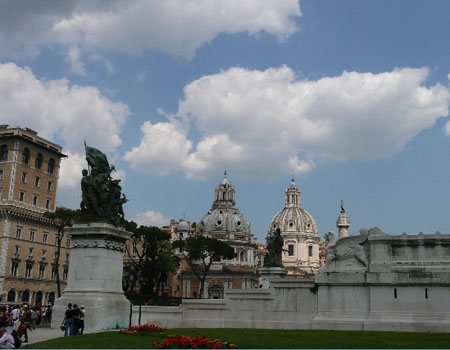
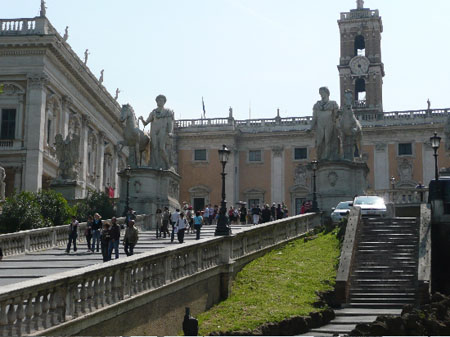

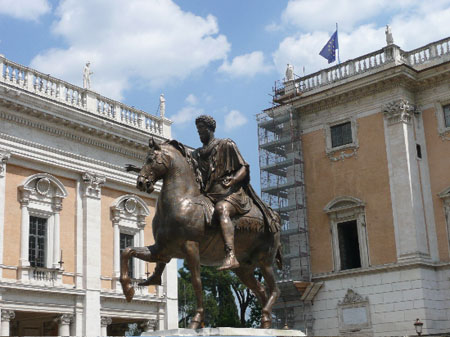
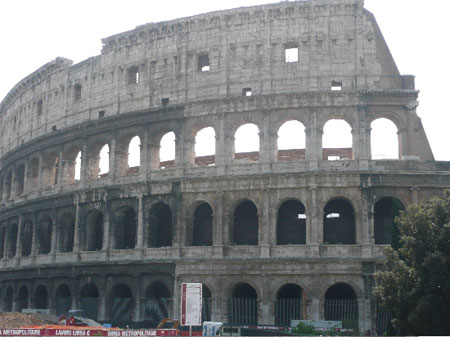

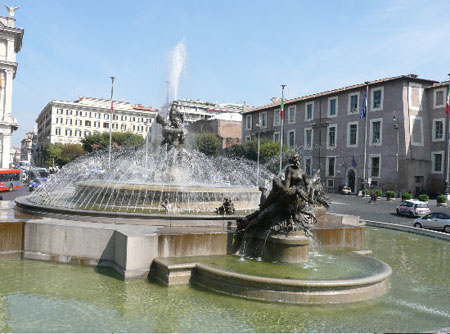
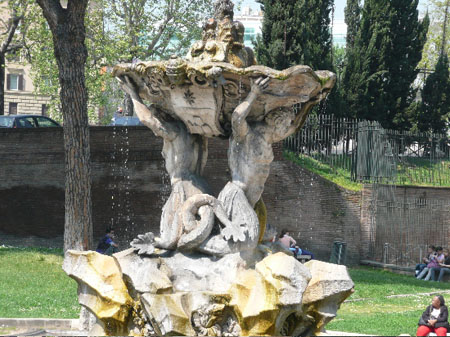
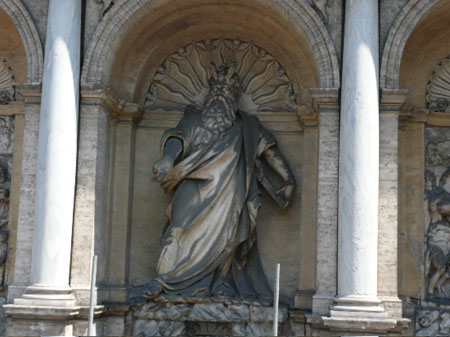
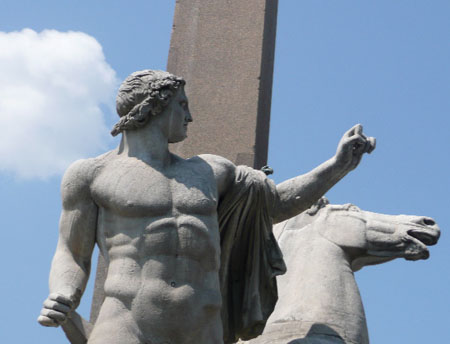

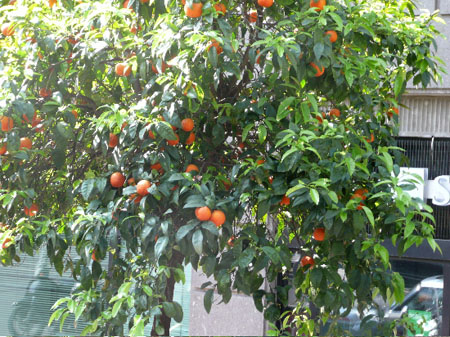
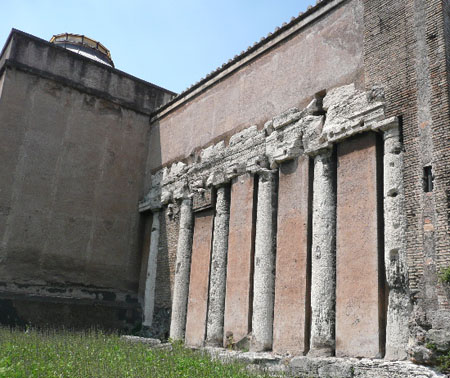
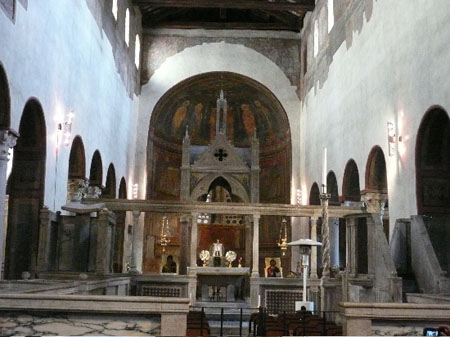
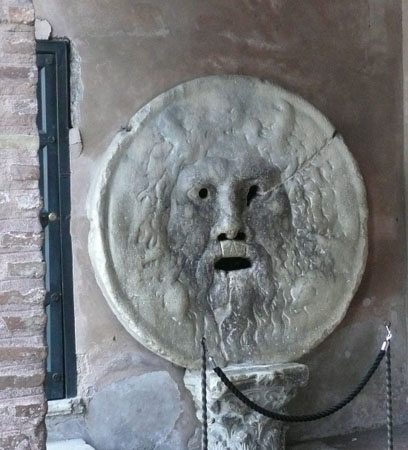
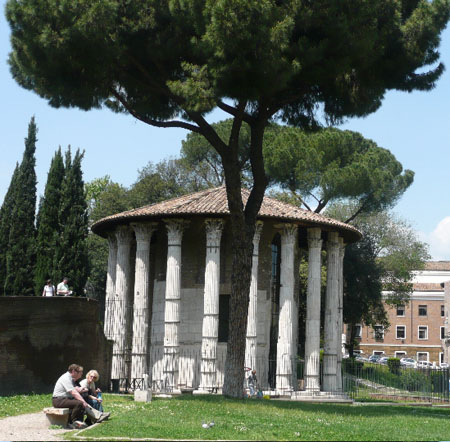
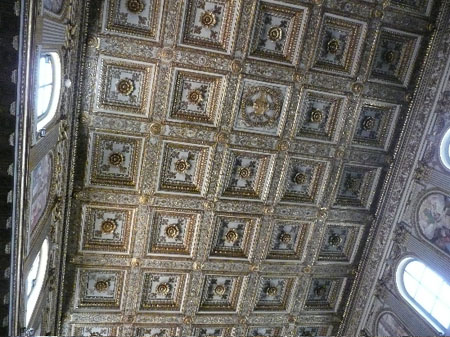
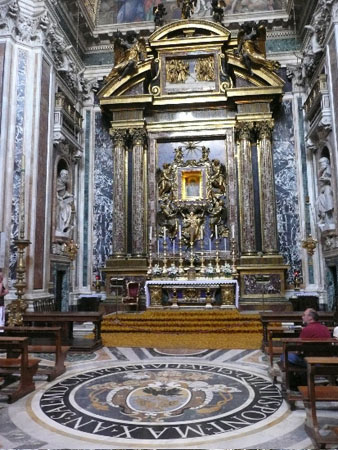
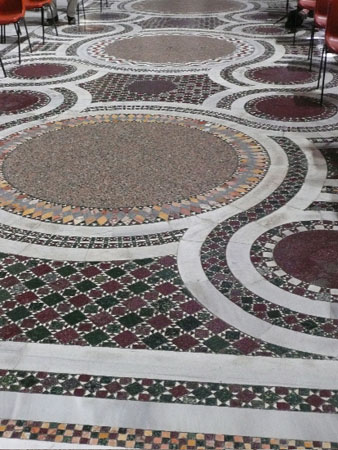
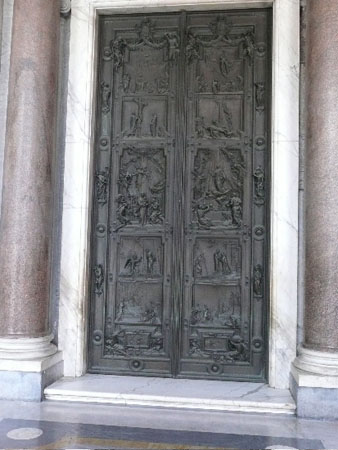
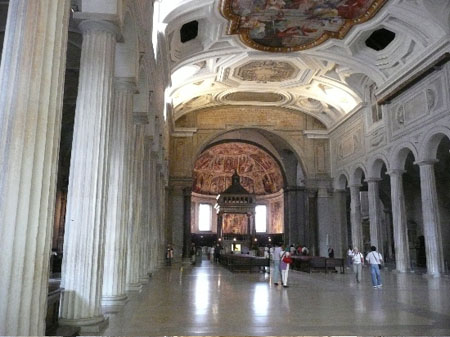
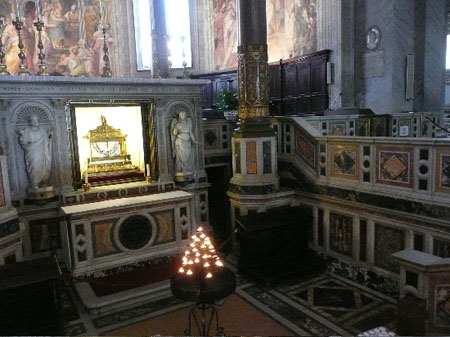
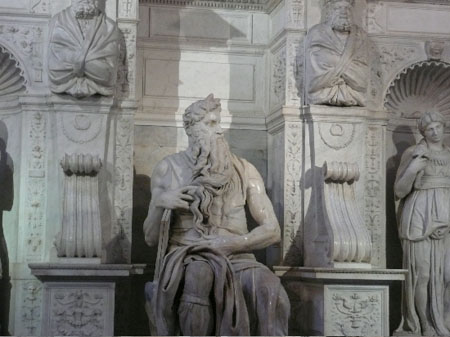
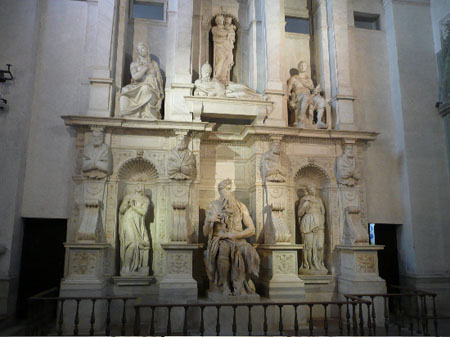
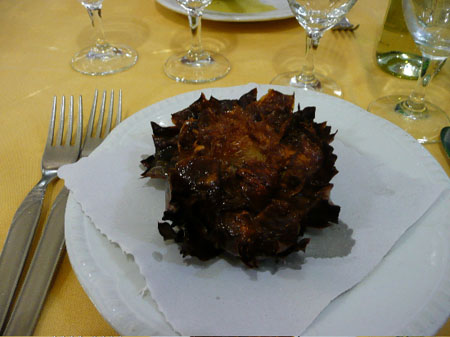
1 thoughts on “Mediterranean Cruise – Rome”